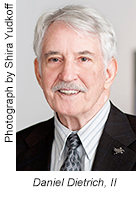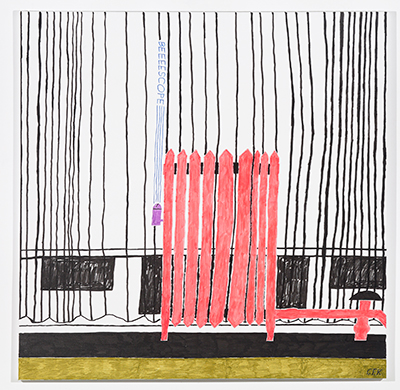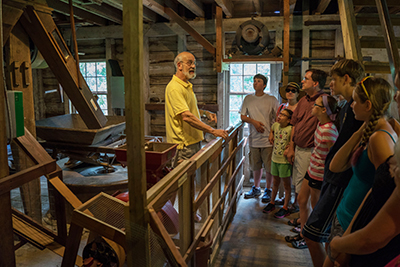$10 Million NIH Grant: Physical Sciences Oncology Center at Penn
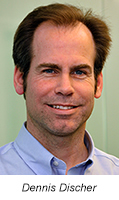
University of Pennsylvania investigators at a new Penn research center will focus on key physical principles that underpin cancer’s development and growth.
A five-year, $10 million grant award from the National Institutes of Health (NIH) is supporting the establishment of the Physical Sciences Oncology Center at Penn, or PSOC@Penn. It is one of four centers the National Cancer Institute of the NIH is funding across the country as part of its Physical Sciences in Oncology Network. The network was started in 2009 in recognition of the fact that perspectives rooted in physics, mathematics, chemistry and engineering can all contribute to cancer research.
The Penn team members will make fundamental physical measurements as they clarify mechanisms of how tumors become palpably distinct masses and also how such physical changes contribute to tumor growth. Their research will focus on liver cancer; more than 30,000 people in the United States are diagnosed each year with liver cancer, according to the American Cancer Society, and the five-year survival rate is less than 15 percent. New methods to improve early detection and treatment of the disease are needed.
“A key challenge facing cancer research in this age of precision medicine is to deeply comprehend the molecular causes and consequences of tissue changes that are often first measured by clinicians in physical exams of tumors,” said center leader Dennis E. Discher, the Robert D. Bent Professor in Penn’s School of Engineering & Applied Science.
The Center represents a convergence of interests and accomplishments of co-investigators, including professors Rebecca Wells (medicine), Paul Janmey (physiology), Emma Furth (pathology), David Kaplan (gastroenterology & immunology), Roger Greenberg (cancer biology) and Mark Lemmon (biochemistry) in Penn’s Perelman School of Medicine; Ravi Radhakrishnan (bioengineering), Vivek Shenoy (materials science & engineering) and John Crocker (chemical & biomolecular engineering) in Penn’s School of Engineering & Applied Science; and Andrea Liu (physics & astronomy), Tobias Baumgart (chemistry) and Wei Guo (biology) in Penn’s School of Arts & Sciences.
“Many tumors are first detected as hard lumps of stiff tissue,” Dr. Wells said. “In some cases such as breast cancer, increased tissue stiffness appears to be a risk factor for cancer. Our research will focus on liver cancer because current clinical evidence suggests that liver stiffening may work in the same way, as a high risk factor for developing that disease.”
The researchers will interact closely, bringing together world leaders in cell and tissue mechanobiology and physics-based theory. They will also employ single molecule imaging and molecular biophysics in foundational studies of molecular and tissue profiles, which are rapidly emerging as a way to precisely define a patient’s disease.
“Results from our initial studies already suggest that stiffening of tissue can increase cell proliferation and lead to other cellular changes that contribute to cancer,” said Dr. Janmey.
Specific molecules and cells that Center investigators discover to be contributors to physical changes in liver cancer will become candidates for new therapies.
The key scientific issue driving PSOC@Penn’s research agenda is an emerging awareness that tumor microenvironments can contribute to how cell sub-populations are selected to grow and further evolve. In solid tumors such as liver cancer, it has long been known that stiff, scar-like collagen accumulates in nearby normal tissue, much like what occurs when tissue is injured. Recent research has also shown that a physical stiffness of microenvironments can in turn promote proliferation and can influence gene expression related to cancer’s spread.
“We hypothesize that differences between cells in a given population can arise due to physical properties of microenvironments,” Dr. Discher said. “Furthermore, mutations might also be caused directly by physical properties of microenvironments and thus drive cancer.”
PSOC@Penn will approach questions regarding the effects of physical microenvironment on tumor development with new multi-disciplinary methods. While focused on liver cancer, the Center will develop widely applicable techniques for measuring both the mechanical properties and molecular makeup of a patient’s tumors compared to adjacent normal tissue. Theoretical approaches from the fields of soft matter physics and engineering will enable better interpretation of clinical results and predict effects of physical, biochemical and drug interactions.
Physicochemical studies of single cancer cells will go beyond the cell membrane and into the nucleus. The membrane is how a cell senses physical properties of its surrounding environment, but that information must be transmitted inside the cell for it to change its molecular machinery. Center researchers will visualize this process with super-resolution microscopy, a method that earned its inventors a Nobel Prize in 2014. Probing down to the single-molecule level will provide sufficient structural information to enable realistic simulations on supercomputers, which can be used to generate predictions of these molecules’ functions.
The Center also aims to understand how the shape of the cell’s nucleus changes as part of a response to altered microenvironments. Nuclei differ in their stiffness, which can prevent them from moving through tight tissue spaces. Whether and why such processes might also lead to damage of the DNA contained therein will be important to quantify, as DNA damage is a likely cause of mutations that drive cancer. Similar studies will be conducted of the nucleus in other types of liver cells, including immune cells that might also be made to attack cancer cells. New biophysical concepts, as well as methods, tools and mathematical theories, are all integral to the diversity of the Center’s efforts.
“Integration across the Penn campus will be enhanced by the new Center’s connections to other centers in the Physical Sciences in Oncology Network,” Dr. Discher said.“This should stimulate the pace of discovery in these exciting topics.”
This highly interdisciplinary effort will extend beyond Penn’s campus and the NIH’s network. Education and outreach activities will build bridges between communities. The Center will promote dialogue between physical scientists and theorists on the one side, and cancer biologists on the other, in order to facilitate the development of new breakthroughs. Seminars, symposia and additional Center activities will be open to all interested researchers as well as the public, and outreach will extend to demonstrations at cancer awareness forums. Penn’s new Center will support the cancer research community by providing opportunities for quantitative investigators and for students to receive education in cancer biology and to become embedded in laboratories. The Center will also support pilot grants for interdisciplinary, collaborative research at the intersection of the physical sciences and cancer research.
Key collaborators of the Center include Chi Van Dang, director of Penn’s Abramson Cancer Center; liver and transplant surgeons Kim Olthoff and Abraham Shaked; cell biologist Michael Lampson and outreach coordinator James McGonigle.
Penn’s Inaugural China Research and Engagement Fund Awards
University of Pennsylvania President Amy Gutmann and Provost Vincent Price announced the first recipients of the Penn China Research and Engagement Fund (CREF) awards.
Established last spring (Almanac April 14, 2015), CREF will award up to $10 million over the next five years in the form of matching research grants to Penn faculty to stimulate and support research activity and engagement in China.
“Penn’s China Research and Engagement Fund builds on the deep connections between Penn and China forged over nearly two centuries,” Dr. Gutmann said. “Advancing Penn’s dual mission of research and learning, the awards expand access to Penn’s exceptional intellectual resources as one of the world’s leading research universities and strengthen collaborative relationships between Penn’s eminent scholars and researchers and our Chinese peers to spur innovative broad thinking in seeking real world solutions on issues that confront all societies.
“Penn’s engagement in China via research, academic and student exchanges and broad partnerships with Chinese institutions benefits Penn’s campus and community and enhances global understanding and discovery by bringing the world to Penn and Penn to the world.”
The inaugural Penn CREF grants, totaling nearly $3.8 million during the first three years of the fund, support 16 projects involving researchers across Penn’s 12 schools and also six centers and institutes that are working in collaboration with 35 Chinese institutional partners, as well as more than 10 organizations worldwide.
“Penn has a historic commitment to the integration of knowledge across disciplines,” Dr. Price said. “The complexity of global issues requires multidisciplinary solutions, especially for future challenges that are difficult to anticipate. These exciting projects demonstrate this breadth of expertise among our 12 schools, drawing their strength and innovation from perspectives that span diverse areas of inquiry.”
From Prenatal Ambient Air Pollution and Fetal and Child Development in South China to Improving the Productive and Health Efficiency of the Chinese Dairy Industry, the CREF-sponsored projects cover a broad array of issues including economic history, connections between health and the environment, improving treatment for disease, urbanization and the growth of cities in China and state-owned enterprise reform. The awards support visits to China by more than 100 faculty and students per year and deepen Penn’s understanding of China and collaboration with Chinese partners.
In addition to research-based proposals, there are three projects that expand Penn student programming in China, increasing the opportunity for Penn students to travel in and around China, as well as two new short-term global seminars to be held in China.
Penn’s connections in China include nearly 4,000 Penn alumni who currently live in China and Hong Kong and more than 10,000 alumni who live throughout Asia. Chinese students make up a large percentage of Penn’s international undergraduate and graduate student population on campus, and annually Penn sends many students to China for study abroad programs and internship exchanges. At present, Penn has 180 faculty members with more than 275 projects in or relating to China.
The CREF awards represent another major milestone in Penn’s engagement in China following the opening of the Penn Wharton China Center in Beijing in March (Almanac March 17, 2015). The Center provides logistical support for research, academic and student exchanges and for broad partnerships with China, as well as events and symposia on important academic topics for students, faculty and alumni.
As another opportunity to connect with alumni in China, the University convened the annual Silfen Forum in Beijing last Thursday. Named for David Silfen, a 1966 Penn alumnus, and his wife, Lyn, the forum brought together world-renowned figures in conversation with President Gutmann to reflect on the roles of China and the United States in the world.
In the recently released US News & World Report rankings of colleges and universities, Penn is ranked ninth overall among national universities. Duke remains in the eighth slot that it shared with Penn last year while Princeton, Harvard and Yale remain in the top three slots.
The Wharton School of the University of Pennsylvania has retained its #1 place yet again for best undergraduate business program in the country. It also ranked #1 in four specialties: finance, insurance/risk management, marketing and real estate. It ranked #2 in management; #3 in quantitative analysis/methods; and #4 in accounting, entrepreneurship and international business.
University Operations During the Visit by Pope Francis to Philadelphia
An Update for the Penn Community:
Last month we announced that Penn would suspend normal operations on Friday, September 25, to accommodate the travel and logistical challenges that will exist in the Philadelphia region during the visit by Pope Francis. We write now to provide an update on the University’s preparations.
As a reminder, all classes and University-sponsored events are cancelled on this date. Designated essential personnel—including offices such as but not limited to Public Safety, Dining Services and Facilities that provide essential services, University emergency personnel and those responsible for the health and safety of students and lab animals—will be required to report to work and should consult with their supervisors about accommodations and scheduling. Other staff members, faculty members and students should treat the day under the same protocols as a weather-related suspension of operations. Penn Medicine staff should consult with their supervisors about work schedules.
A web page has been created with details on the hours of operation and availability of student services during the weekend of the Pope’s visit. The website will be updated as any new or additional information becomes available, and can be accessed at: http://www.upenn.edu/about/papal-visit
During the Pope’s visit, traffic closures will extend to 38th Street. A map showing the areas of the city that will be blocked to traffic can be accessed directly at this link: http://www.upenn.edu/about/papal-visit-maps The Division of Public Safety is working with essential personnel from the University and Penn Medicine to provide access, as well as retail stores and restaurants in University City to access the traffic box for essential business purposes during specific non-peak hours.
Public Safety has also developed a set of alternate routes to campus for those who will need to travel to work during the Papal visit. While road closures and traffic cannot be guaranteed, the alternate suggestions may provide you with useful options to consider if you must travel during this time period. The alternate routes can be found at: http://www.upenn.edu/about/papal-visit-maps#papal-routes
Additional information from the City of Philadelphia can be found at this site: http://www.phila.gov/InformationCenters/pope/Pages/default.aspx
We very much appreciate the dedication and commitment of all those in the Penn family who will be working through this historic weekend to ensure that our students, faculty and staff have access to facilities and services and patients at our hospitals continue to receive world-class care.
—Vincent Price, Provost
—Craig Carnaroli, Executive Vice President
Establishing Provost’s Arts Advisory Council
From the Office of the Provost:
Provost Vincent Price and Vice Provost for Faculty Anita Allen announce the creation of a Provost’s Arts Advisory Council. Under the leadership of Vice Provost Allen, the Council will advise the Provost on and map the future of the arts at Penn. Building on the achievements of the three-year Art and Culture Initiative (2012-2015) co-sponsored by the Office of the Provost and the School of Arts & Sciences and led by Professor Karen Beckman, the Council will develop new arts initiatives and collaborations among arts centers and academic programs, administer interdisciplinary arts grants, and draft proposals to strategically advance the arts and arts education at Penn, consistent with University-wide goals of innovation, social impact and the integration of knowledge.
The members of the Council are:
Norman Badler, Rachleff Professor of Computer and Information Science, SEAS
Karen Beckman, chair and Jaffe Professor of the History of Art, SAS
Winka Dubbeldam, chair and professor of architecture, School of Design
Al Filreis, Kelly Professor of English, SAS, and faculty director, Kelly Writers House
Jeffrey Kallberg, associate dean for arts and letters and Kenan Professor of Music, SAS
Lynn Marsden-Atlass, University curator and director, Arthur Ross Gallery
Laurie McCall, director, Platt Student Performing Arts House
Joshua Mosley, chair and professor of fine arts, School of Design
Michael Rose, managing director, Annenberg Center for the Performing Arts
Amy Sadao, Dietrich Director, Institute of Contemporary Art
Julian Siggers, Williams Director, Penn Museum
Anthony Sorrentino, executive director, Office of the Executive Vice President
Karl Ulrich, vice dean for entrepreneurship and innovation and CIBC Professor of Entrepreneurship and E-Commerce, Wharton School
2016 Models of Excellence Award Nominations: October 29
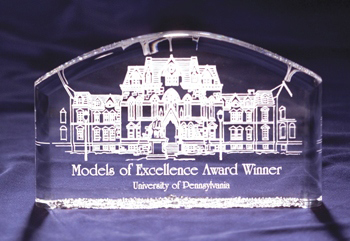
Penn staff members are known for their exemplary work, and now is your chance to recognize these efforts with Penn’s 2016 Models of Excellence award. Nominations for the 2016 awards are open now through October 29, 2015.
The Models of Excellence award program celebrates the extraordinary achievements of full- and part-time staff across the University’s schools and centers. Awards are given in three categories:
• Models of Excellence Award–Recognizes staff member accomplishments that reflect initiative, leadership, increased efficiency and a deep commitment to service.
• Model Supervisor Award–Honors supervisors who contribute to Penn’s success.
• Pillars of Excellence Award–Celebrates the important work that weekly-paid staff members do to promote Penn’s success.
New this year, you have an easier, greener way to nominate the exceptional staff members you know by using an online application.
The form is available at https://www.hr.upenn.edu/models
All nominees receive a certificate of appreciation for their service. Models of Excellence, Pillars of Excellence and Model Supervisor winners each receive $500 and a symbolic award. Nominees selected for honorable mention receive $250 and a symbolic award. Awards will be presented at the Models of Excellence ceremony on March 30, 2016 in Irvine Auditorium. The entire Penn community is invited to attend.
Visit https://www.hr.upenn.edu/models for more information about the Models of Excellence program, or contact Human Resources at models@hr.upenn.edu or (215) 898-1012 if you have questions.
—Division of Human Resources
Employee Resource Fair: An Opportunity to Participate
Dear University of Pennsylvania Departments & External Vendors,
The Penn Professional Staff Assembly (PPSA) and the Penn Weekly-Paid Professional Staff Assembly (WPPSA), in partnership with the offices of the Executive Vice President and the Division of Human Resources, are co-sponsoring an Employee Resource Fair on Thursday, October 8 from noon-2 p.m. in Bodek Lounge and the Reading Room in Houston Hall. The purpose of the fair is to provide information to employees regarding the vast and varied campus resources and services available to them. The fair will be open to the entire Penn community.
We are excited to offer you an opportunity to participate in the 2015 Employee Resource Fair. We would welcome representation from your area and encourage you to showcase your services. If you would like to participate, pre-registration is required, and we ask that two representatives from your office staff a table. Typically, participants bring both informational and promotional materials on their services, brochures, giveaways, etc. Please feel free to advertise your participation in the Resource Fair through your email lists and newsletters. Set-up and breakdown will take place from 11 a.m. to noon and from 2 p.m. until 2:30 p.m.
Space is limited so register today. In order to secure your reservation, complete the registration by September 29, 2015; go to https://upenn.irisregistration.com/Auth/Authenticate/
In addition to the Employee Resource Fair there will be a Volunteer Fair organized in tandem with the event. This Volunteer Fair takes place in the Reading Room right next to Bodek Lounge. PPSA invites groups from the Philadelphia area to inform members of the Penn community about the volunteer opportunities they have available. There will be approximately 10-15 local non-profits represented at the fair. Space is limited.
Thank you for your thoughtful consideration to participate in the 2015 Employee Resource Fair. For all inquiries, please contact ppsa@exchange.upenn.edu
—Lucia DiNapoli, PPSA Chair —Rosa Vargas, WPPSA Chair
University Research Foundation Applications: October 23
The University Research Foundation (URF) is now accepting applications for the October 23, 2015 deadline. The URF is an intramural funding program that provides up to $50,000 support for research projects and up to $3,000 for conference support.
The objectives of the URF research program are to:
(1) help junior faculty undertake pilot projects that will enable them to successfully apply for extramural sources of funding and aid in establishing their careers as independent investigators;
(2) help established faculty perform novel, pioneering research to determine project feasibility and develop preliminary data to support extramural grant applications;
(3) provide support in disciplines where extramural support is difficult to obtain and where significant research can be facilitated with internal funding; and
(4) provide limited institutional matching funds that are required as part of a successful external peer-reviewed application.
URF Review Panels comprise established Penn faculty members and are charged with giving preference to projects that meet one of the aforementioned criteria.
As part of the University’s commitment to providing research opportunities to scholars across our campus community, URF applicants are encouraged to include undergraduate student participants within the framework of their proposals. URF Review Panels will take undergraduate participation under strong consideration when evaluating and scoring proposals. Should applicants require assistance in identifying interested and qualified undergraduates, the Center for Undergraduate Research and Fellowships (CURF) will be glad to provide support: curf@upenn.edu
Faculty members are invited to submit their research applications to one of four disciplinary areas: Biomedical Sciences, Humanities, Natural Sciences and Engineering, and Social Science and Management. In addition, URF offers a Conference Support program to provide funding for meetings designed to enhance existing research and scholarly programs, particularly in disciplines where external funding is difficult to obtain. Conferences that promote interdisciplinary and multi-school participation are given priority.
Complete details about the URF and links to the forms can be found on the Office of the Vice Provost for Research website at www.upenn.edu/research/funding/university_research_foundation
In the most recent cycle, Spring 2015, of Penn’s internally-funded University Research Foundation and URF Conference Support (noted with *), the Office of the Vice Provost for Research has announced awards to the following members of the faculty for the projects listed below.
Spring 2015: University Research Foundation Awards and Conference Support Awards
Stefan Al, School of Design, city & regional planning; Sustainable Urban Form: A Comparative Analysis of Asian High-Density Block
Montserrat Anguera, School of Veterinary Medicine, animal biology, Faulty X-chromosome silencing as significant contributor for female-bias in autoimmunity
*Robert Aronowitz, School of Arts & Sciences, history & sociology of science, Joint Atlantic Seminar for the History of Medicine
Lee Bassett, School of Engineering & Applied Science, electrical & systems engineering, New Tools for Imaging Neuronal Dynamics using Quantum Probes
Erfei Bi, Perelman School of Medicine, cell & developmental biology, Developing a powerful model for mechanistic analysis of cell abscission
Margaret Bruchac, School of Arts & Sciences, anthropology, Fictive Kin: Re-assembling Frank Speck’s Native Relations and Collections
Robin Clark, School of Arts & Sciences, linguistics, Drift and Selection in Language Evolution
*Karen Detlefsen, School of Arts & Sciences, philosophy, Women, Liberty, Education Early Modern Philosophy of Education
Zhengxia Dou, School of Veterinary Medicine, clinical studies, Household food waste composition and recovery assessment
Andrea Doyle, School of Social Policy & Practice, Trauma-Informed Skills for African American Women with a Diagnosis of Borderline Personality Disorder (BPD) and HIV
David Eckmann, Perelman School of Medicine, anesthesiology, Nano-rheology of biological materials
*Joseph Farrell, School of Arts & Sciences, classical studies, The Language of the Past and the Future of Ancient Studies
Loretta Flanagan-Cato, School of Arts & Sciences, psychology, Dopamine-estradiol interactions and amygdala function
Grant Frame, School of Arts & Sciences, Near Eastern languages & civilizations, Completing the Royal Inscriptions of Sargon II of Assyria
*Ira Harkavy, School of Arts & Sciences, Netter Center, University-Assisted Community Schools: Advancing the Model Locally, Nationally, and Globally
Matthew Hayes, Perelman School of Medicine, psychiatry, Examination of novel neuroendocrine signaling pathways to affect food reward
Olena Jacenko, School of Veterinary Medicine, biomedical studies, Could a young niche rejuvenate hematopoiesis?
F. Brad Johnson, Perelman School of Medicine, pathology & laboratory medicine, Deciphering functions of microRNAs encoded from HLA class I loci
*Michael Kahana, School of Arts & Sciences, psychology, 2016 Context and Episodic Memory Symposium
*Justin Khoury, School of Arts & Sciences, physics & astronomy, New Frontiers in Cosmology and String Theory
Bekir Harun Kucuk, School of Arts & Sciences, history & sociology of science, Enlightenment and Imperial Decline: Ottoman Cultures of Naturalism, 1650-1750
*Annette Lareau, School of Arts & Sciences, sociology, Culture and Interaction Conference
Christopher Lengner, School of Veterinary Medicine, animal biology, Identifying markers for the prospective isolation of reserve intestinal stem cells
Catherine McDonald, School of Nursing, family & community health, A Pilot Study of a Mobile Technology Monitoring System to Assess a Web-based Intervention for Teen Risky Driving
Scott Poethig, School of Arts & Sciences, biology, The evolution of vegetative phase change in the Acaciae
Avishag Reisman, Graduate School of Education, Practice-Based Coaching and Professional Development: Supporting Teacher Facilitation of Whole-Class Text-based History Discussion
*Charles Brian Rose, School of Arts & Sciences, classical studies, The World of Phrygian Gordion, Royal City of Midas
Andrew Saunders, School of Design, architecture, Digital Analysis of the Latent Topological Structure of Baroque Architecture
Theodore Schurr, School of Arts & Sciences, anthropology, Genetic History of Los Floridanos, Florida’s First Spanish Families
Patrick Seale, Perelman School of Medicine, cell & developmental biology, Impact of aging on beige fat differentiation an energy expenditure
Robert Seyfarth, School of Arts & Sciences, psychology, What Makes a Good Seeing Eye Dog
Tatyana Svitkina, School of Arts & Sciences, biology, Acquisition of a fluorescence microscope
* John Tresch, School of Arts & Sciences, history & sociology of science, Sorting Brains Out: Tasks, Tests, and Trials in the Neuro- and Mind Sciences, 1890-2015
Kevin Turner, School of Engineering & Applied Science, mechanical engineering & applied mechanics, Improving Fracture Resistance of Polymer using Cellulose Nanofibrils



